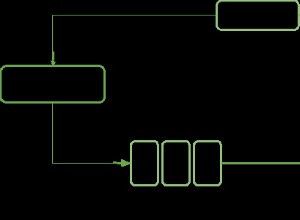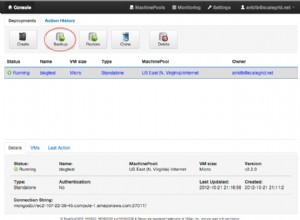Habe mich von diesem https://gist.github.com/mizrael/a061331ff5849bf03bf2 inspirieren lassen und erweiterte Implementierung, die für mich funktioniert hat. Ich habe eine gefälschte Implementierung der IFindFluent-Schnittstelle erstellt und sie hatte eine Abhängigkeit von der IAsyncCursor-Schnittstelle, also habe ich auch eine gefälschte Implementierung davon durchgeführt und diese als Gegenleistung für die Mock-Methode verwendet, die ich einrichten wollte. In dieser gefälschten Implementierung habe ich eine Enumerable initialisiert und diese in einer von mir verwendeten Methode zurückgegeben. Sie können immer noch kreativer sein und herumspielen, was Sie zurückgeben möchten. Bisher hat das bei mir funktioniert.
Hier ist eine gefälschte Implementierung.
public class FakeFindFluent<TEntity, TProjection> : IFindFluent<TEntity, TEntity>
{
private readonly IEnumerable<TEntity> _items;
public FakeFindFluent(IEnumerable<TEntity> items)
{
_items = items ?? Enumerable.Empty<TEntity>();
}
public FilterDefinition<TEntity> Filter { get => throw new NotImplementedException(); set => throw new NotImplementedException(); }
public FindOptions<TEntity, TEntity> Options => throw new NotImplementedException();
public IFindFluent<TEntity, TResult> As<TResult>(MongoDB.Bson.Serialization.IBsonSerializer<TResult> resultSerializer = null)
{
throw new NotImplementedException();
}
public long Count(CancellationToken cancellationToken = default)
{
throw new NotImplementedException();
}
public Task<long> CountAsync(CancellationToken cancellationToken = default)
{
throw new NotImplementedException();
}
public long CountDocuments(CancellationToken cancellationToken = default)
{
throw new NotImplementedException();
}
public Task<long> CountDocumentsAsync(CancellationToken cancellationToken = default)
{
throw new NotImplementedException();
}
public IFindFluent<TEntity, TEntity> Limit(int? limit)
{
throw new NotImplementedException();
}
public IFindFluent<TEntity, TNewProjection> Project<TNewProjection>(ProjectionDefinition<TEntity, TNewProjection> projection)
{
throw new NotImplementedException();
}
public IFindFluent<TEntity, TEntity> Skip(int? skip)
{
throw new NotImplementedException();
}
public IFindFluent<TEntity, TEntity> Sort(SortDefinition<TEntity> sort)
{
throw new NotImplementedException();
}
public IAsyncCursor<TEntity> ToCursor(CancellationToken cancellationToken = default)
{
throw new NotImplementedException();
}
public Task<IAsyncCursor<TEntity>> ToCursorAsync(CancellationToken cancellationToken = default)
{
IAsyncCursor<TEntity> cursor = new FakeAsyncCursor<TEntity>(_items);
var task = Task.FromResult(cursor);
return task;
}
}
public class FakeAsyncCursor<TEntity> : IAsyncCursor<TEntity>
{
private IEnumerable<TEntity> items;
public FakeAsyncCursor(IEnumerable<TEntity> items)
{
this.items = items;
}
public IEnumerable<TEntity> Current => items;
public void Dispose()
{
//throw new NotImplementedException();
}
public bool MoveNext(CancellationToken cancellationToken = default)
{
throw new NotImplementedException();
}
public Task<bool> MoveNextAsync(CancellationToken cancellationToken = default)
{
return Task.FromResult(false);
}
}
So richte ich meine Scheinmethode ein, um das zurückzugeben, was ich für meine Einheitentests wollte.
mockParticipantRepository
.Setup(x => x.FindByFilter(It.IsAny<FilterDefinition<Participant>>()))
.Returns(new FakeFindFluent<Participant, Participant>(participantsByRelation));
Ich hoffe, das ist hilfreich.




